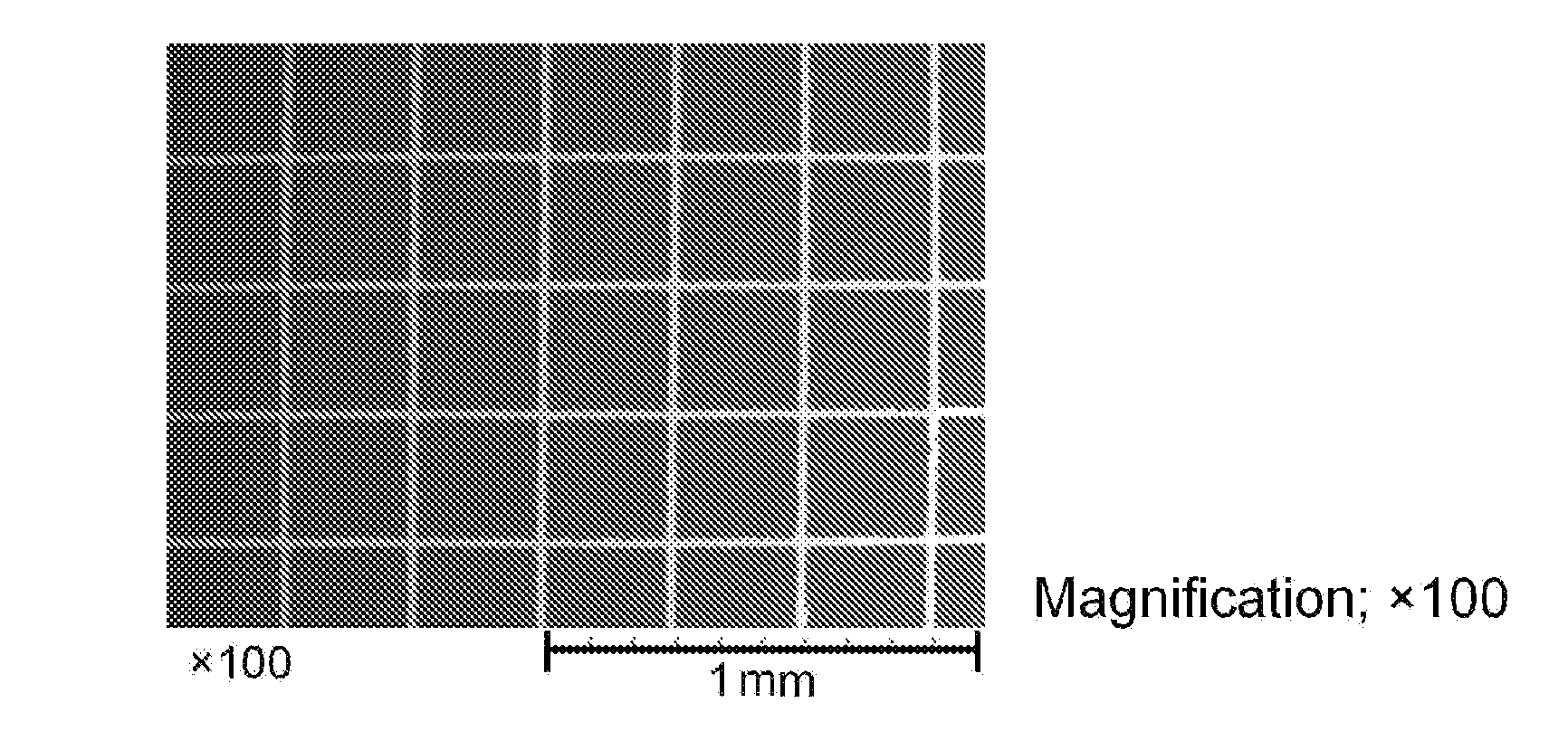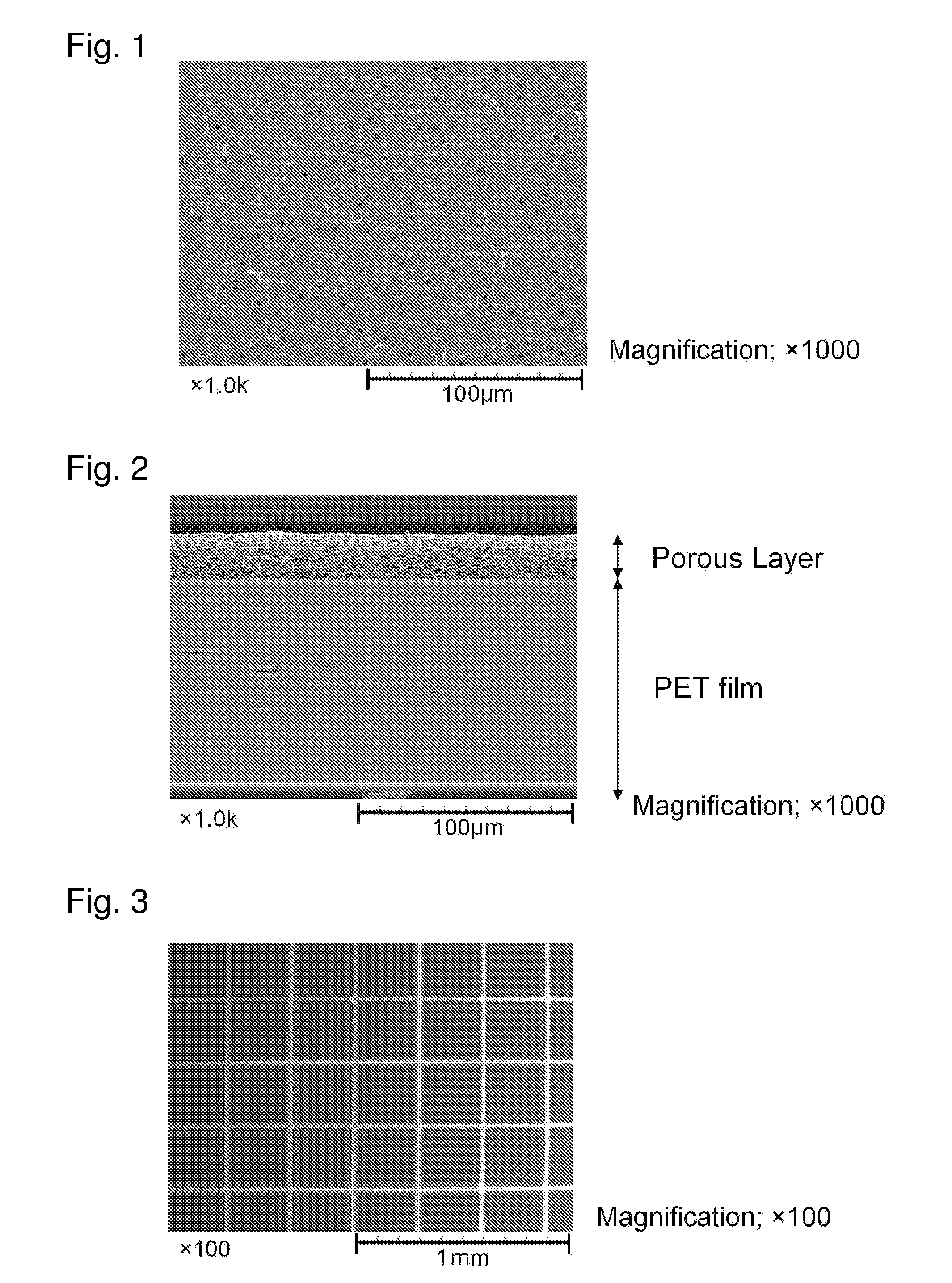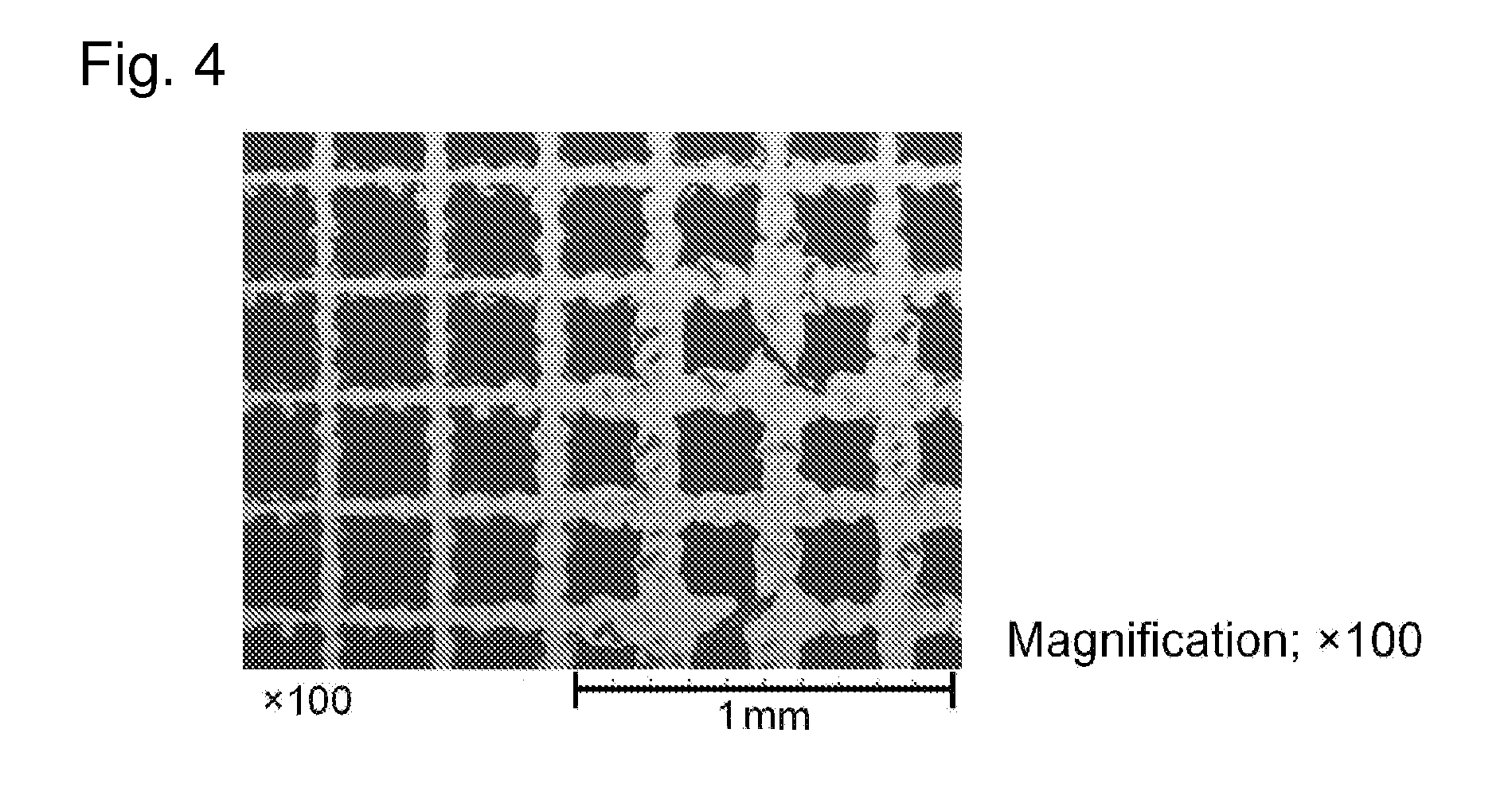Layered product having porous layer and functional layered product made with the same
a technology of functional layered products and porous layers, which is applied in the direction of dielectric characteristics, conductive pattern formation, instruments, etc., can solve the problems of reducing the shielding effect, requiring an expensive production apparatus, and affecting the operation of the operator of the instrument, etc., and achieves excellent flexibility of the porous layer, excellent folding endurance and handling ability, and sufficient strength
- Summary
- Abstract
- Description
- Claims
- Application Information
AI Technical Summary
Benefits of technology
Problems solved by technology
Method used
Image
Examples
example 1
Porous Layer-Layered Product
[0246]A polyvinyl butyral resin solution (“POLYVINYL BUTYRAL 2400” manufactured by Wako Pure Chemical Industries, Ltd. (average polymerization degree: about 2,300 to 2,500); solid content concentration: 15% by weight; solvent: NMP) was prepared, and this was used as a material solution for film-formation. A PET film (S type; thickness: 100 μm) manufactured by Teijin DuPont Films Japan Limited as a base was fixed onto a glass plate with a tape. This material solution, the temperature of which was set to 25° C., was cast onto the base using a film applicator under a condition that the gap between the film applicator and the base was 76 μm. Immediately after the casting, the resultant article was kept in a vessel having a humidity of about 100% and a temperature of 50° C. for 4 minutes. Thereafter, the article was immersed in water to be coagulated. Next, the article was naturally dried at a room temperature without peeling the cast material from the base, t...
example 2
Porous Layer-Layered Product
[0248]To 100 parts by weight of a polyvinyl butyral resin solution (“POLYVINYL BUTYRAL 2400” manufactured by Wako Pure Chemical Industries, Ltd. (average polymerization degree: about 2,300 to 2,500); solid content concentration: 15% by weight; solvent: NMP) was added 10 parts by weight of polyethylene glycol 400 (average molecular weight: 360 to 440) manufactured by Wako Pure Chemical Industries, Ltd. as a water-soluble polymer, so as to prepare a material solution for film-formation. A PET film (S type; thickness: 100 μm) manufactured by Teijin DuPont Films Japan Limited as a base was fixed onto a glass plate with a tape. This material solution, the temperature of which was set to 25° C., was cast onto the base using a film applicator under a condition that the gap between the film applicator and the base was 102 μm. Immediately after the casting, the resultant article was kept in a vessel having a humidity of about 100% and a temperature of 50° C. for 4...
example 3
Porous Layer-Layered Product
[0250]The same operations as in Example 2 were made except that a PET film (trade name: “LUMIRROR T60” manufactured by Toray Industries, Inc.; thickness: 100 μm) was used instead of the PET film (S type; thickness: 100 μm) manufactured by Teijin DuPont Films Japan Limited as a base in Example 2, so as to yield a layered product C wherein a white porous layer was layered on the base. The thickness of the resultant porous layer was about 15 μm, and the total thickness of the layered product was about 115 μm.
[0251]About the obtained layered product C, the tape peeling test was made. As a result, no interfacial peeling was caused between the base and the porous layer. This layered product C was observed with an electron microscope. As a result, the porous layer adhered closely to the PET film, and was substantially homogenous inside thereof, and had micropores having an average pore diameter of about 2 μm over the whole thereof. The porosity inside the porous...
PUM
| Property | Measurement | Unit |
|---|---|---|
| porosity | aaaaa | aaaaa |
| pore diameter | aaaaa | aaaaa |
| glass transition temperature | aaaaa | aaaaa |
Abstract
Description
Claims
Application Information
 Login to View More
Login to View More - R&D
- Intellectual Property
- Life Sciences
- Materials
- Tech Scout
- Unparalleled Data Quality
- Higher Quality Content
- 60% Fewer Hallucinations
Browse by: Latest US Patents, China's latest patents, Technical Efficacy Thesaurus, Application Domain, Technology Topic, Popular Technical Reports.
© 2025 PatSnap. All rights reserved.Legal|Privacy policy|Modern Slavery Act Transparency Statement|Sitemap|About US| Contact US: help@patsnap.com



